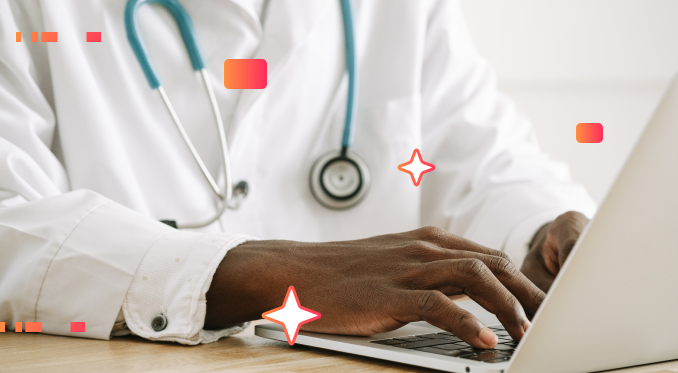A Comprehensive Guide to Subscription Based Healthcare: What You Required to Know
A Comprehensive Guide to Subscription Based Healthcare: What You Required to Know
Blog Article
Comprehending the Cost-Effectiveness of Subscription-Based Medical Care Models
As the health care landscape progresses, subscription-based designs arise as an engaging option, guaranteeing to redefine exactly how individuals handle medical expenses. Assessing these models' cost-effectiveness necessitates a nuanced comparison with traditional insurance, taking into consideration both economic effects and person contentment.
Introduction of Subscription-Based Designs
Subscription-based health care models, sometimes described as straight medical care or concierge medication, are progressively acquiring attention as a possible remedy to ineffectiveness within conventional healthcare systems. These versions run on the principle of offering patients direct access to medical care carriers with a yearly or monthly cost, bypassing the requirement for traditional insurance devices. This plan aims to enhance patient-provider interactions by decreasing administrative problems, which typically hinder individualized and timely care.
At the core of subscription-based versions is the emphasis on an extra individualized patient experience. People take advantage of boosted access to their medical professionals, frequently consisting of same-day or next-day consultations, extended examination times, and direct communication networks such as phone or video phone calls. This version promotes a proactive method to medical care, where companies and clients can collaboratively concentrate on preventative care and chronic condition monitoring.

Price Comparison With Conventional Insurance Coverage

One of the primary economic benefits of membership models is openness in expenses. On the other hand, conventional insurance might be a lot more beneficial for people calling for specialized care or expensive therapies not covered under a membership model, as they profit from the wider coverage network and cost-sharing devices.
Nevertheless, cost-effectiveness is context-dependent. While subscription versions might supply savings for those largely needing health care, people with persistent conditions or specialized medical care needs could find conventional insurance policy much more thorough. Evaluating certain medical care requirements and prospective use is crucial in identifying the most affordable choice for individuals.
Effect On Client Fulfillment
Client satisfaction within subscription-based healthcare versions usually mirrors a considerable enhancement over conventional insurance systems. Unlike traditional systems, where people may experience delays in receiving treatment, subscription-based designs ensure even more prompt and straight communications with healthcare providers.
In addition, the openness in costs connected with subscription-based medical care minimizes the common stress connected to unexpected costs and complicated billing procedures seen in conventional insurance policy (subscription based healthcare). Individuals appreciate understanding the exact monetary commitment upfront, causing enhanced trust fund and confidence in their medical care administration
In addition, the emphasis on preventative care and health in subscription designs adds to enhanced wellness outcomes, additionally enhancing individual satisfaction. By focusing on recurring health care instead than episodic care, individuals experience an even more continuous and holistic health care trip.
Furthermore, the improved provider-patient partnership fostered in these models, characterized by pop over to these guys even more time invested per patient and individualized focus, plays an essential function in boosting individual complete satisfaction degrees, as people really feel genuinely cared for and comprehended.
Supplier Viewpoints and Experiences
From the copyright's viewpoint, subscription-based healthcare models provide a transformative method to providing medical services. These models emphasize a preventative and proactive healthcare technique, enabling companies to concentrate on detailed individual treatment without the restrictions of conventional fee-for-service plans (subscription based healthcare). This shift in focus frequently results in improved patient end results and increased company satisfaction, as medical care specialists can designate more time and resources to patient engagement and individualized treatment plans
Moreover, subscription versions assist in predictable revenue streams, which boost monetary stability for doctor. This predictability permits enhanced resource preparation and allowance, contributing site here to an extra effective healthcare distribution system. Companies can buy team facilities, training, and technology enhancements, thereby boosting the quality of treatment offered.
Nonetheless, the transition to subscription-based designs is not without challenges. Suppliers should adjust to new functional structures, which can involve substantial changes in invoicing techniques and client monitoring systems. Additionally, there is an intrinsic demand for robust information monitoring to track patient results and make certain top quality treatment. Despite these obstacles, several companies locate that the advantages of increased individual communication and structured operations outweigh the preliminary obstacles, making subscription-based versions an attractive choice.
Future Leads and Obstacles

A key difficulty is regulatory compliance, as registration designs should follow advancing health care policies and insurance policy demands. This necessitates continuous adjustment and advancement to guarantee placement with legal standards. In addition, integrating these versions right into existing healthcare frameworks can be complicated, calling for considerable investments in modern technology and training.
There is also the possible danger of developing inequities in medical care gain access to, as registration designs could favor those that can afford them, leaving prone populations underserved. Resolving this calls for thoughtful consideration of rates techniques and aid mechanisms to make sure inclusivity.
Conclusion
Subscription-based health care versions present a sensible alternative to standard insurance by providing financial predictability and transparency, especially profiting individuals with chronic problems or constant healthcare requirements. The cost-effectiveness of these versions rests upon individual health care use patterns and conditions. While they may enhance individual satisfaction and improve budgeting, difficulties continue to be in resolving specialized care needs. Future considerations consist of stabilizing thorough insurance coverage with affordability and integrating these designs within the wider health care system for ideal end results.
Subscription-based medical care versions, occasionally referred to as straight main care or concierge medicine, are increasingly obtaining focus as a possible option to ineffectiveness within conventional healthcare systems. Unlike traditional systems, where patients could experience hold-ups in getting care, subscription-based learn this here now versions make certain more prompt and direct interactions with medical care carriers.
These designs emphasize a preventative and aggressive health care technique, permitting suppliers to focus on comprehensive person care without the constraints of typical fee-for-service plans. As these models proceed to acquire grip, they provide the potential to reinvent client accessibility to care, improve service shipment, and optimize health care spending.Subscription-based medical care models offer a practical choice to conventional insurance policy by providing economic predictability and transparency, specifically benefiting individuals with persistent conditions or regular healthcare requirements.
Report this page